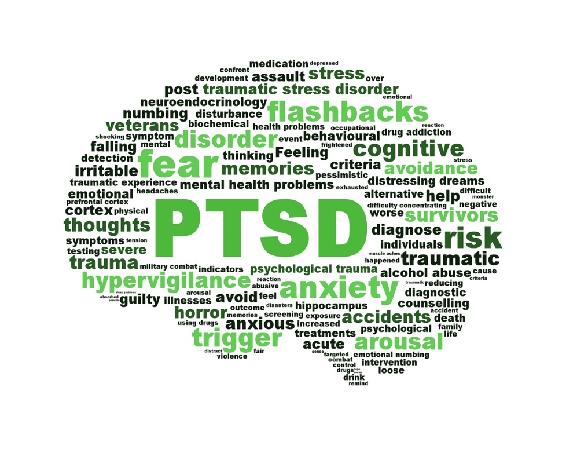6.9: Post-traumatic stress reactions to the pains of imprisonment
- Page ID
- 16070
For some prisoners, incarceration is so stark and psychologically painful that it represents a form of traumatic stress severe enough to produce post-traumatic stress reactions once released. Moreover, we now understand that there are certain basic commonalities that characterize the lives of many of the persons who have been convicted of crime in our society. A "risk factors" model helps to explain the complex interplay of traumatic childhood events (like poverty, abusive and neglectful mistreatment, and other forms of victimization) in the social histories of many criminal offenders. As Masten and Garmezy have noted, the presence of these background risk factors and traumas in childhood increases the probability that one will encounter a whole range of problems later in life, including delinquency and criminality. The fact that a high percentage of persons presently incarcerated have experienced childhood trauma means, among other things, that the harsh, punitive, and uncaring nature of prison life may represent a kind of "re-traumatization" experience for many of them. That is, some prisoners find exposure to the rigid and unyielding discipline of prison, the unwanted proximity to violent encounters and the possibility or reality of being victimized by physical and/or sexual assaults, the need to negotiate the dominating intentions of others, the absence of genuine respect and regard for their wellbeing in the surrounding environment, and so on all too familiar. Time spent in prison may rekindle not only the memories but the disabling psychological reactions and consequences of these earlier damaging experiences.

Figure 2.4 PTSD. Image has been designated to the public domain by Q .under a CC0 1.0 Universal Public Domain Dedication
The dysfunctional consequences of institutionalization are not always immediately obvious once the institutional structure and procedural imperatives have been removed. This is especially true in cases where persons retain a minimum of structure wherever they re-enter free society. Moreover, the most negative consequences of institutionalization may first occur in the form of internal chaos, disorganization, stress, and fear. Yet, institutionalization has taught most people to cover their internal states, and not to openly or easily reveal intimate feelings or reactions. So, the outward appearance of normality and adjustment may mask a range of serious problems in adapting to the free world.
This is particularly true of persons who return to the free world lacking a network of close, personal contacts with people who know them well enough to sense that something may be wrong. Eventually, however, when severely institutionalized persons confront complicated problems or conflicts, especially in the form of unexpected events that cannot be planned for in advance, the myriad of challenges that the non-institutionalized confront in their everyday lives outside the institution may become overwhelming. The facade of normality begins to deteriorate, and persons may behave in dysfunctional or even destructive ways because all of the external structure and supports upon which they relied to keep themselves controlled, directed, and balanced have been removed.

